Male beans? Mother beans? Flat beans? Round beans? Will Peaberry coffee beans taste better?
Professional coffee knowledge exchange More coffee bean information Please pay attention to coffee workshop (Weixin Official Accounts cafe_style)
I don't know when coffee beans started to have the term "male beans". The so-called male bean refers to an oval coffee bean shaped like a pea. Its scientific name is Peaberry. Pea means pea, and Berry generally refers to berries or berries, such as grapes, tomatoes, strawberries, blueberries, dried nuts, dried seeds, etc. So a Peaberry is a berry that looks like a pea.
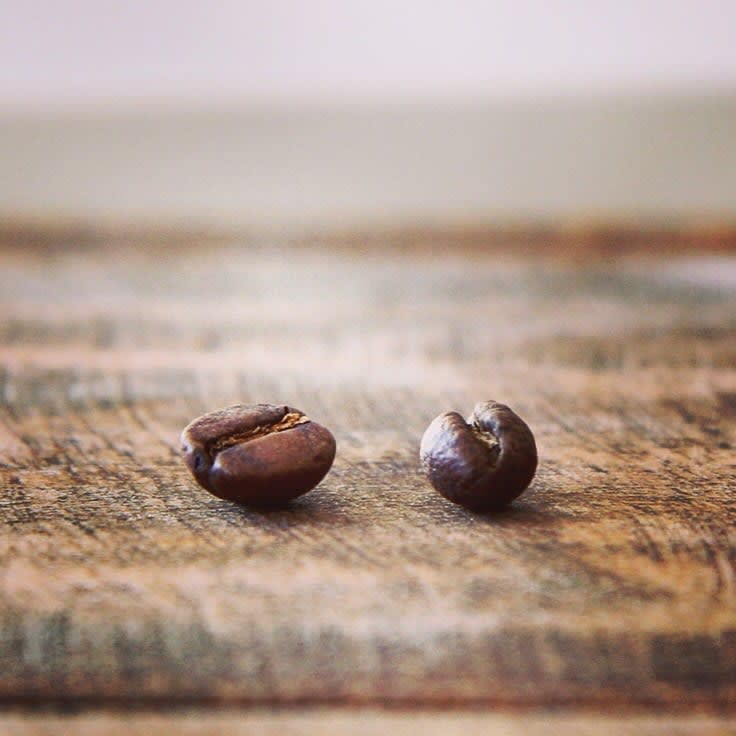
There is a saying that Peaberry is a fruit that grows at the end of a branch, lacks nutrients, is poorly developed, and grows at the end of a branch. This is not true, because beans like Peaberry are not seen only in the branches of a fruitful coffee tree, but throughout the tree, in small numbers, accounting for only about 5% of the total yield.
Another way of saying it is that coffee beans grow up, the core matures slowly over time, and when they grow to a certain extent, the seeds naturally split into two halves, becoming coffee beans like peanuts with two opposite sides, while Peaberry beans are beans with only one crack that cannot split into two cores. In fact, this explanation is not entirely natural, of course, coffee beans are also a misunderstanding caused by ignorance.
In fact, Peaberry is the result of incomplete pollination. Foreign countries call this kind of bean dwarf bean, which is an incomplete coffee bean.
Observing coffee berries bearing fruit on branches, usually one fruit contains two seeds, but there are always a few growing in the shape of a single seed, we call it Peaberry(Figure 1), Chinese translated as "round bean"; of course, it is very likely that there will be more than two seeds in a coffee berry, and as long as there are more than two seeds, the shape will present a triangular shape, so it is called triangular bean.
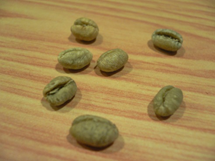
Botanically speaking, a pair of seeds must grow at the same time, but only grow a pea (pea), foreign coffee botanists call them dwarf beans, which are the product of incomplete pollination, so they are abnormal beans.
There are two seeds in a fruit called regular beans (Figure 2), which means normal beans.
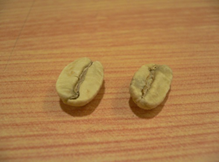
If there is only one seed in a fruit, it is a Peaberry, and the seed on the other side is usually an empty shell (Figure 3), which is called a shell bean. It also has an interesting name called an elephant ear bean (Figure 4).
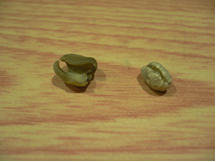
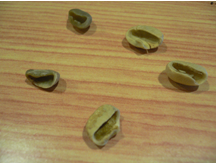
If a fruit has three seeds at the same time (Figure 5), most of them will appear as three triangular beans together, occasionally one side of the elephant ear bean, the other side of the two closely nestled triangular beans (Figure 6), the combination of these two beans is exactly the size of a normal bean. There have been four triangular beans squeezed into a fruit at the same time, but the probability of appearing is relatively small.
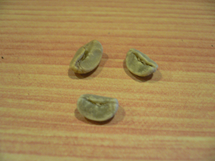
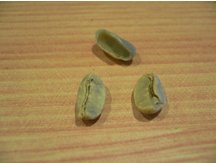
The most personal issue for everyone--will Peaberry taste better?
Many people have the misconception that Peaberry beans perform better in cups than regular beans, but this is not the case. Peaberry coffee beans from all over the world, regardless of their country of origin, generally exhibit thinner gum than conventional beans, relatively strong and direct acidity, and slightly less complexity and level of flavor than conventional beans. Peaberry is particularly sought after, saying that its flavor is more prominent and obvious than ordinary beans from the same producing area. In fact, different flavors are certain, but the same production area, the difference can not be the difference between heaven and earth, do not let "rare things are expensive" confused thinking.
For baking, there are certain benefits to sifting out this 5% of Peaberry beans independently. Because after screening, the size of the beans in a batch becomes even, which helps to control the baking fire evenly. Imagine that smaller beans in the same oven will ripen faster than larger beans. This uniform volume may be a factor in the claim that flavor prevails. As with all coffee flavor issues, don't listen to hearsay, use your own taste to distinguish!
Why isn't Peaberry available in all places? This has to do with processing equipment and business decisions. Not all places of origin will be specially screened out and sold independently. And what we can buy now is mainly screened out by machines. Many online materials write the screening action as "manual," which is a bit "high water."
END
Important Notice :
前街咖啡 FrontStreet Coffee has moved to new addredd:
FrontStreet Coffee Address: 315,Donghua East Road,GuangZhou
Tel:020 38364473
- Prev
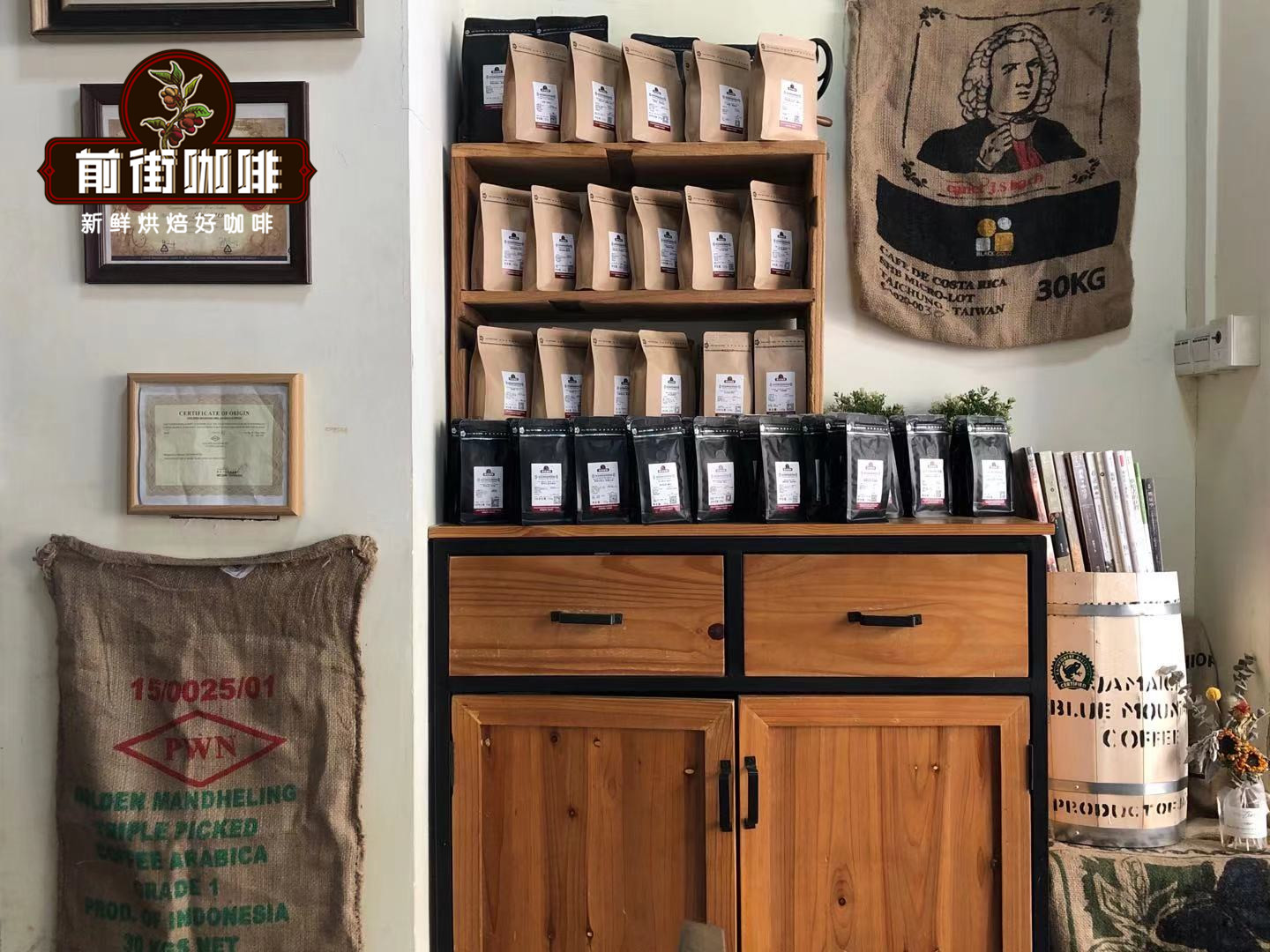
How to bake beans for different brewing methods? What is the difference between hand brewing and espresso roasting?
Professional coffee knowledge exchange More coffee bean information Please pay attention to coffee workshop (Weixin Official Accounts cafe_style) When choosing the roasting degree of a coffee, there are many things to consider. Do you want to roast it lightly, medium or deeply? What is the method of roasting coffee? How does the treatment affect the baking curve? And the brewing method is also an important consideration, you will be based on this coffee is to use
- Next
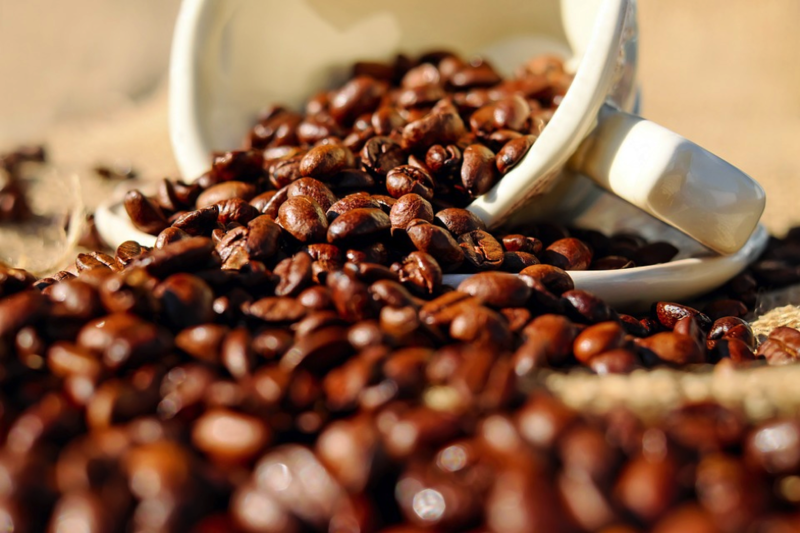
What happened to your coffee? Learn about the 8 "rumors" about coffee!
Professional coffee knowledge exchange more information about coffee beans Please follow the coffee workshop (Wechat official account cafe_style) besides water, coffee is the most consumed beverage in the world. People from different cultures and industries have been enjoying this brewing drink for centuries. Coffee has a long and rich history and plays an indispensable role in our lives, so I
Related
- Beginners will see the "Coffee pull flower" guide!
- What is the difference between ice blog purified milk and ordinary milk coffee?
- Why is the Philippines the largest producer of crops in Liberia?
- For coffee extraction, should the fine powder be retained?
- How does extracted espresso fill pressed powder? How much strength does it take to press the powder?
- How to make jasmine cold extract coffee? Is the jasmine + latte good?
- Will this little toy really make the coffee taste better? How does Lily Drip affect coffee extraction?
- Will the action of slapping the filter cup also affect coffee extraction?
- What's the difference between powder-to-water ratio and powder-to-liquid ratio?
- What is the Ethiopian local species? What does it have to do with Heirloom native species?

